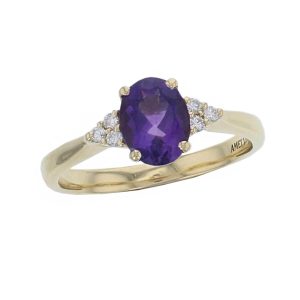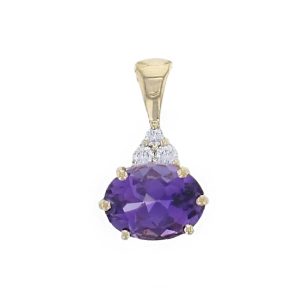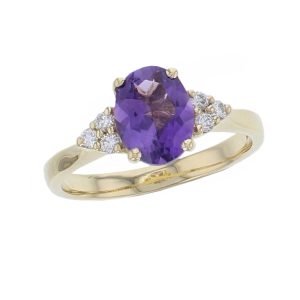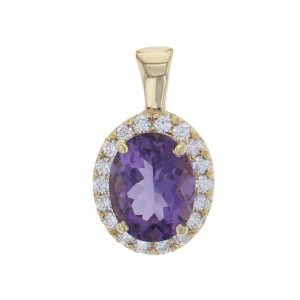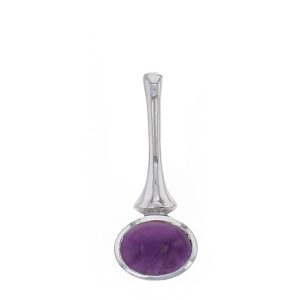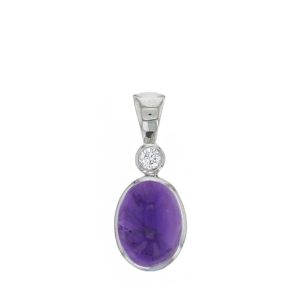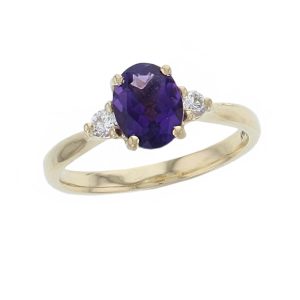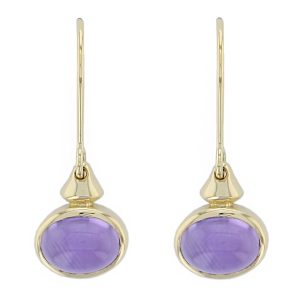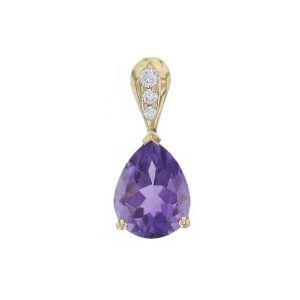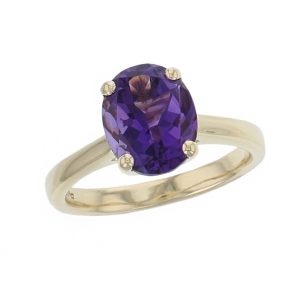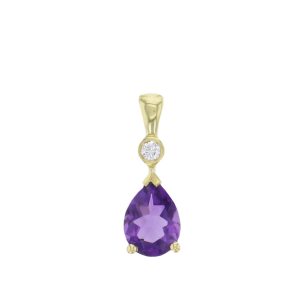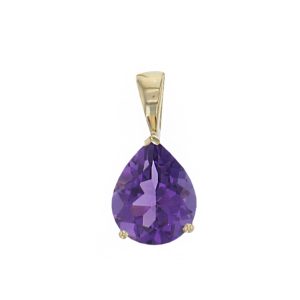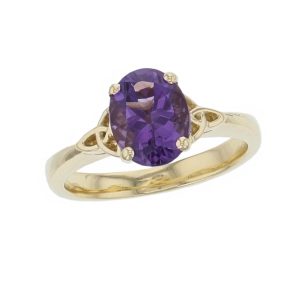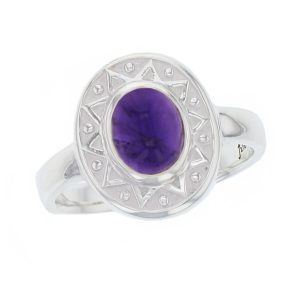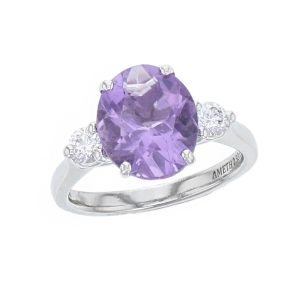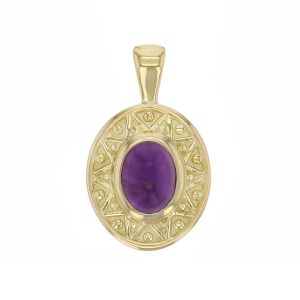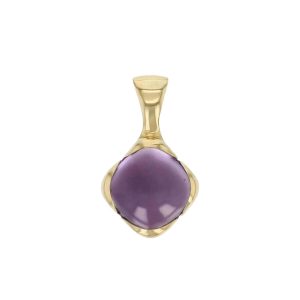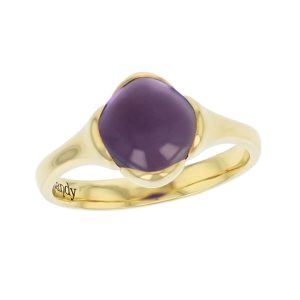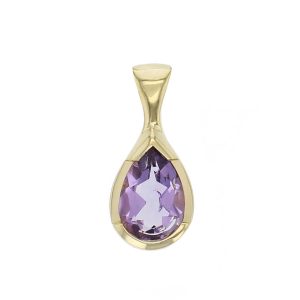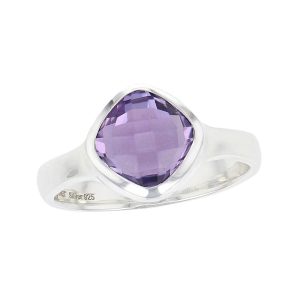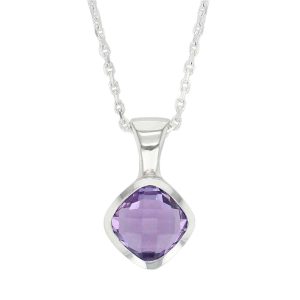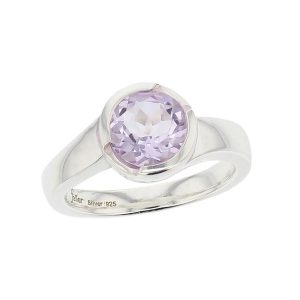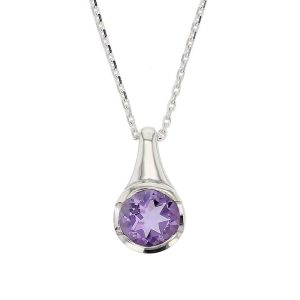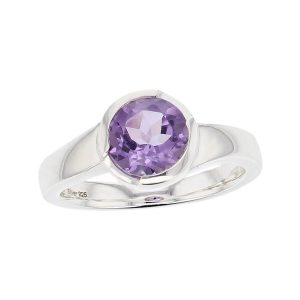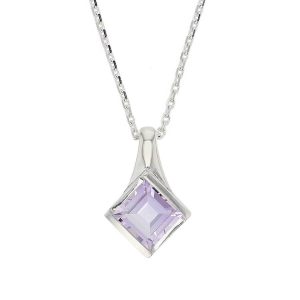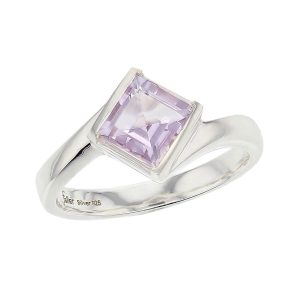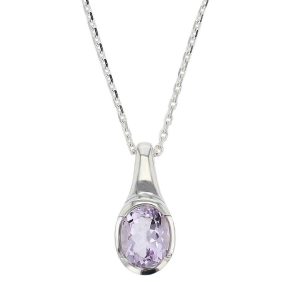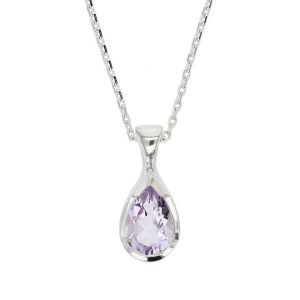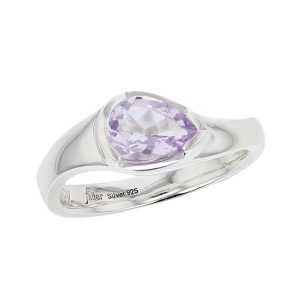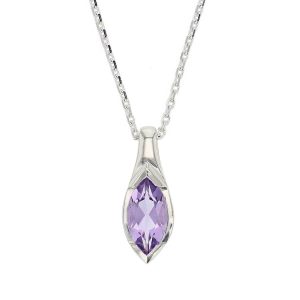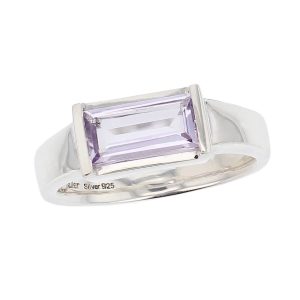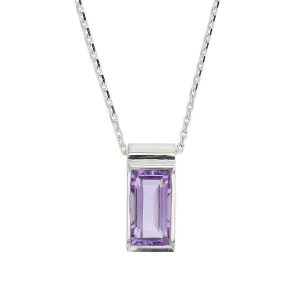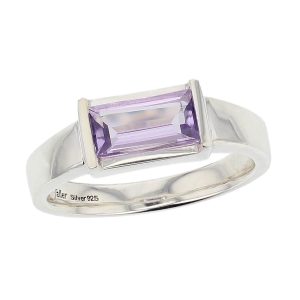-
About Amethyst
Amethyst has been a treasured gem since antiquity and is included in royal collections all over the world. For centuries amethyst was valued even higher than rubies and sapphires and only worn by royalty or by the clergy as a symbol for the deity of Christ. Amethyst exclusivity changed when vast deposits of amethyst were found throughout the Americas, particularly in Brazil in South America. Now the beauty of amethyst is available to all.
-
Physical Characteristics
The semi-precious gemstone Amethyst is a purple variety of quartz. Like many other quartz its attractive colour, durability and the affordability make it very popular. Amethyst has a hardness of 7 on Moh’s scale.
Amethyst crystals occur in a wide range of sizes and large carat gems are readily available. As a result price per carat does not rise dramatically for larger sizes.
Much of the faceted amethyst in the market is eye-clean, meaning it lacks eye-visible inclusions and any inclusions will decrease its value. Amethyst can be carved, custom-cut, or calibrated for jewelry use. Amethysts with eye-visible inclusions but attractive color are usually cut as cabochons or beads.
Amethyst ranges from a very light pinkish violet to a deep purple and occurs from transparent to translucent. It can fade in tone if overexposed to light sources. The value of amethyst is primarily defined by depth of colour. The finest amethyst color is a strong reddish purple or purple with no visible colour zoning. The paler the colour or the more visible the zoning of lighter and darker purple colour, the lower the value.
In Bolivia, amethyst and citrine occur in the same crystal. Called ametrine, these crystals are half purple and half yellow.
-
Spiritual & Health Benefits
Ancient Greeks and Romans believed that the stone protected the wearer from the intoxicating powers of Bacchus, keeping the wearer clear-headed and quick-witted. Believed to block angry or uneasy emotions amethyst is associated with qualities such as peace, stability, courage, strength and holiness.
-
Care
Abrupt temperature changes can cause amethyst to fracture. Prolonged exposure to intense light may cause some amethyst to fade in colour. Amethyst can also be damaged by hydrofluoric acid, ammonium fluoride, and alkaline solutions.
Amethyst jewellery it best cleaned with warm soapy water and carefully dried with a lint free cloth. Ultrasonic cleaners are usually safe except in the rare instances where a stone is dyed or treated by fracture filling. Steam cleaning is not recommended, and amethyst should not be subjected to heat.
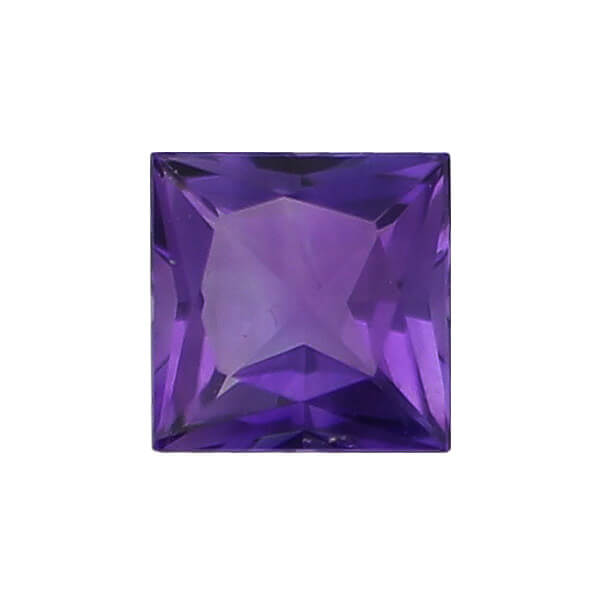
Amethyst
Amethyst is the birthstone for February and the gem for zodiac sign Aquarius, the gemstone for the 6th and 9th wedding anniversaries.


